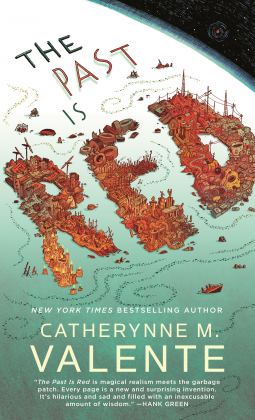The Ice Ghost, by Kathleen O'Neal Gear (DAW)
The Ice Orphan, by Kathleen O'Neal Gear (DAW)
I previously reviewed the first of the “Rewilding Reports”
novels (The Ice Lion) and I liked it (The Ice Lion, by Kathleen O'Neal Gear, DAW). The set-up is appealing: In
the far future, an attempt to halt the Earth’s runaway warming resulted in a
new, apocalyptic Ice Age with glaciers three miles high and a poisonous slime,
“zyme” covering the oceans. As the planet descended into this frigid nightmare,
the last scientists recreated species that had survived earlier Ice Ages: dire
wolves, helmeted musk oxen, cave lions, and extinct, archaic human species like
the Denisovans, Neanderthals, and Homo erectus. Remnants of the
previous civilization persist in myths (about the godlike Jemen = G-men), an
enigmatic scientist with an artificially extended lifespan, and a quantum
computer spiraling into loss of function.
Some
of the things I liked best about the first volume are here in the subsequent books.
Foremost is the humanity, culture, and sensitivity, and poetic imagery of the
pre-human characters. We moderns tend to regard our ancestors as dim-witted and
lacking in social graces, although recent discoveries reveal such markers of
cooperative culture as care for the injured and burial of the dead long before H.
sapiens came along. Gear’s characters, although having much smaller brains,
are nonetheless resourceful, compassionate, and thoughtful. The Dog Soldiers (H.
erectus) may have had small, sloping skulls, but their understanding of
ethical issues, not to mention their literacy and reverence for books, marks
them as anything but “primitive.” In fact, the most advanced of the three
species, the Rust People Neanderthals, are the most violent.
The
Ice Ghost and
The Ice Orphan continue the adventures of Sealion People
(Denisovan) Lynx and Quiller, and members of Quiller’s family, as they struggle
against an increasingly hostile terrain and new enemies. Legends mix uneasily
with prophecies and dreams, as none of the pre-human species draws precise
differences between poorly understood history, inspiration, and the visions
born of mental illness or hallucinogens. The disintegrating quantum computer,
called “Quancee,” is undoubtedly real, as is the reanimated Jemen general bent
on destroying the computer’s autonomy and changing it into a weapon, and the
brutal Rust People (Neandertal) shaman whose visions drive him to invade the
Jemen stronghold and reawaken the ancient ruler. Who, of course, has an agenda
of her own.
These next two volumes have many of the strengths of the first, including smooth prose, sympathetic characters, innovative world-building, and wonderful physical descriptions. The characters are portrayed through their experiences so that only occasionally are their physical appearances important. What matters is the quality of their characters, their courage, compassion, leadership, and honesty.
Each of the three books centers on a different but related
quest, and therein lies not only the charm of the series and the independence
of each installment, but a flaw in the latter two. The first volume of a series
has a lot of work to do, establishing not only viewpoint characters, their
goals and conflicts, but the world itself. In this case, the world’s history is
critical to the story. To her credit, Gear does not bash us over the head with
pages of exposition and backstory. History is gleaned from hints here and
there, and the understanding of the characters. In this, Gear does a great job,
even when historical facts have become distorted or even erased with time and
the demands of survival in an increasingly perilous
environment.
The problem I experienced was that, compared with the first
volume (The Ice Lion), what comes next felt lightweight. They seemed
more like novellas in the scope of the plot, stories fleshed out with too many
repetitive descriptions and inconsequential or trivial events.
My second problem arose from the conflation of imaginary and
real events. In books of this type, there’s an expectation that mysterious
elements will be revealed (as opposed to fantasy, where magic need not have any
relationship to the laws of physics), that the reader will be able to put
together the pieces and figure out what the age-warped technology, historical
events, and so forth really are. And how much were real technology, events, and
so forth, versus how much the imaginative, often superstitious interpretation.
Gear’s characters treat superstition as just as real as tangible physical
articles, but we the readers lack the clues to distinguish them. Perhaps those
clues will be revealed in a future volume. Alas, I for one found two novels too
long to be befuddled. This was made worse by hand-waving technology, such as
near-immortality antiaging tech, a way for the genetically modified prehumans
to receive telepathic communications from a computer, and the dream quest of
Quiller’s adolescent son, which left me wondering if he was spiritually
“transformed” or actually dead.
I continue to recommend the first volume of this series for all the reasons cited above. As for the rest, other readers may find the same delight in them. The series looks to be continuing. As they say, “YMMV.”




